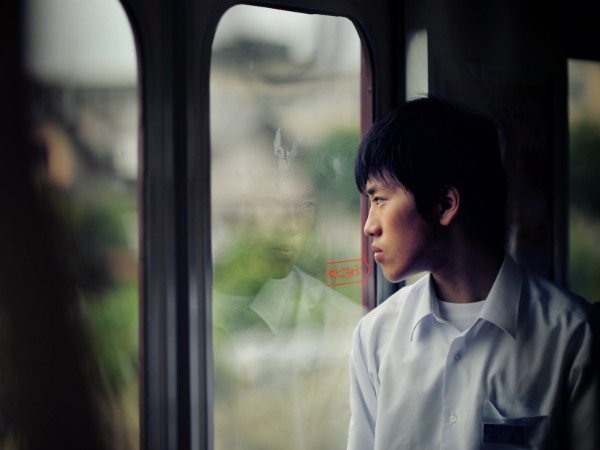The online world can be an incredible place: it lets you learn new things, express your thoughts and ideas, and connect with others. However, it can have a troubling impact on someone’s body image. Children and adolescents have been reported to be most at risk for developing unhealthy and unhelpful attitudes about their bodies because of the edited, filtered, and PhotoShopped images and messages that bombard them online. At a time when you are focused on creating and developing your own identity, strong media messages and peer pressure can have an impact on how you see yourselves and your body.
People with body image issues feel worried and upset about their appearance. This may be a displeasure with their weight and shape or their skin colour and smoothness. They may be upset about being too thin or too fat, too tall or too short, too curvy or not curvy enough, too dark or too fair. The important thing to recognise about how people experience body image issues is that no two people are the same: someone might be deeply unhappy with a feature of their body that you would love to have.
Boys and girls also generally have different concerns about their body, but body image is not a “girl’s problem”. In fact, it is increasingly common for boys to experience anxieties and concerns about their bodies. However, boys are just less likely to talk about them. Regardless of why someone is dissatisfied with their body, it is an experience that is felt in similar ways.
What is body image?
Body image refers to the way we feel about our bodies. A positive body image is when you feel comfortable and happy with your body. This healthy body image is what we hope to promote and encourage in people. A negative body image is when a person feels upset or embarrassed about their body. This unhealthy body image can be worsened by comparisons to beauty standards set up in the media.
Why would someone get body image issues from the Internet?
There is a lot of research describing the effect of both social and traditional mass media on someone's perception of themselves. The problem of a young person’s overexposure to the images they see of bodies online is when they internalize these ideals and compare their bodies to the ones on the screen. This is a doomed comparison from the beginning since the images, as we all know, are not real. However, these images are often very realistic, making it more likely for someone to internalise them as something they can and should be able to obtain. Not obtaining this ideal shape can then cause more hardship for this person than for the person who is able to recognise the media content as an unrealistic standard and one they don’t feel the need to live up to.
One unique feature of the online world is social media, which is not just visual, but highly interactive. On social media, having more likes and followers are easy indicators of a person’s popularity and their online achievement. This can easily shape someone’s sense of self-worth. Social media allows everyone to get real-time feedback and validation. They know that specific messages, images, and presentations of themselves are ‘liked’ better by other people, and the anonymous nature of some social media also lets them know when images or messages are not liked by others. These positive and negative comments and posts put huge amounts of pressure on someone to present themselves in only one way – the ‘right’ and ‘likeable’ way – online.
By virtue of the fact that people can selectively choose what to post and which versions of themselves to present, social media is often about someone’s appearance. People follow celebrities and online influencers, they have apps such as VSCO Snapseed to edit and filter their photos before posting them, they even have apps like Huji or Kuji Cam to make their photos look like they were taken on film – a new and popular fad – and they spend a lot of time talking about how they look. It is not unusual for people to spend a lot of time thinking about how to pose, when the light strikes best, where the best backdrops are, and even when the best time to post a photo to get optimum likes is – all for one photo.
Ultimately, the stronger the connection between how someone looks and how much they are worth – the more effort they put into curating their online identity – the greater the potential for body image issues. It is easy to become trapped in a world where you are anxiously waiting for likes and comments, then feeling disappointed and hurt if you do not receive them, even deleting the post so that more people are not witness to your ‘failure’.
What are the consequences of having body image issues?
- Spending too much time online, particularly on social media
- Anxious when going online
- Feelings of self-doubt and self-hate
- Lowered self-esteem
- Self-harm
- Depression
- Eating disorders
- Higher risk of suicide
I think my friend has body image issues. How can I tell?
It can be hard to tell if someone has body image issues because they present so differently amongst people. However, here are some signs you can watch out for:
- Spending more time online, especially on social media
- Appearing upset or anxious when they go online
- Taking more photos of themselves
- Checking their appearance more often
- Commenting about their appearance negatively
- Hiding their body under baggy clothes
- Exercising a lot more than usual
- Eating a lot more or less than usual
How can I stop myself from getting these issues?
- Change the media you are watching: look up content that is body positive and consume those instead – this means the music you listen to, the movies or shows you watch, and even the games you play
- Find good influencers: extend this change to the influencers you follow online, many have started to 'go real' and reveal the tricks that go into making a 'perfect' photo
- Use media actively instead of passively: if you think of media as something you choose instead of something passively in the background, the more conscious you will be about the types of media you accept as real
- Question the truthfulness of online images: when you see an image, ask yourself questions like who created it, whether it is real or edited, and why it was created that way.
- Question the status quo: when you see media, like movies or TV shows, that show certain body types positively instead of others, ask yourself questions like why these body shapes are being shown in those ways, what the creators are trying to say, and what people might think watching it.
- Check yourself: only you can know how much your self-worth depends on your appearance, so try your best to stop yourself from thinking it
- Compliment yourself: think about the things you are or have achieved beyond your appearance, and remind yourself that you are worth more than just how you look like
- Learn about other types of people: think about people who have made something of themselves for reasons outside their appearance and despite their body type or shape – like Stephen Hawking, Maya Angelou, Malala Yousafzai, or Alan Turing












